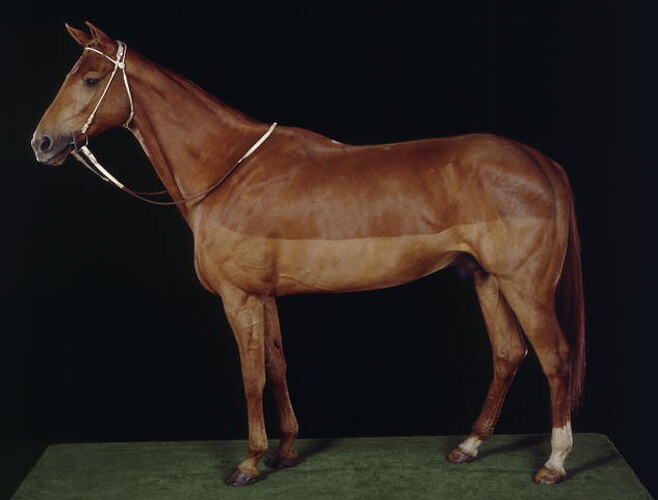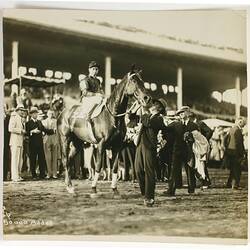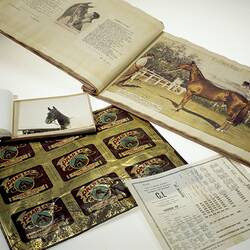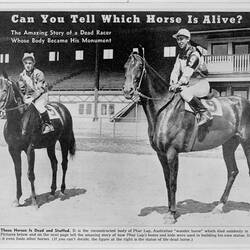New research announced at Melbourne Museum today confirms champion racehorse Phar Lap ingested a lethal dosage of arsenic hours before his death.
Researchers Dr Ivan Kempson from the University of South Australia and Dermot Henry, Manager, Natural Science Collections at Museum Victoria, determined that it was possible to distinguish between arsenic which had been ingested and that used during the taxidermy process.
This proves that Phar Lap had ingested a large dose of arsenic in the last 30 to 40 hours of his life.
'We have been able to find suitable taxidermied horses to compare the behaviour of the arsenic used in the preservation process with arsenic which has been ingested. Our findings are underscored by the results of Phar Lap's autopsy, which are consistent with other published cases we have found of horses dying from arsenic poisoning' explained Henry.
'Hair incorporates products from the blood supply and as it grows can present a historical timeline of exposure to toxins'. Tests using intense Xrays to detect arsenic in Phar Lap's hair, were conducted at the Synchrotron in Chicago in 2005, 2006 and 2007.
'The synchrotron makes it possible to detect low concentrations of metals in very small samples and allows detailed chemical mapping on the nanometre scale,' said Kempson.
It was also necessary to determine whether it was possible to distinguish ingested arsenic from arsenic which may have been used as a preservation agent in the preparation of Phar Lap's hide.
'Comparisons were made between arsenic in hair from historical museum specimens, which had been preserved using arsenic, and arsenic in hair from a pig that had ingested a fatal dose of arsenic, in a separate, unrelated project' explained Henry.
Preliminary results, reported in October 2006, suggested that Phar Lap had ingested arsenic. However researchers then had not yet found a suitable taxidermied horse to compare the behaviour of the arsenic used in the preservation process in horse hairs.
More Information
-
Keywords
-
Authors
-
Article types






